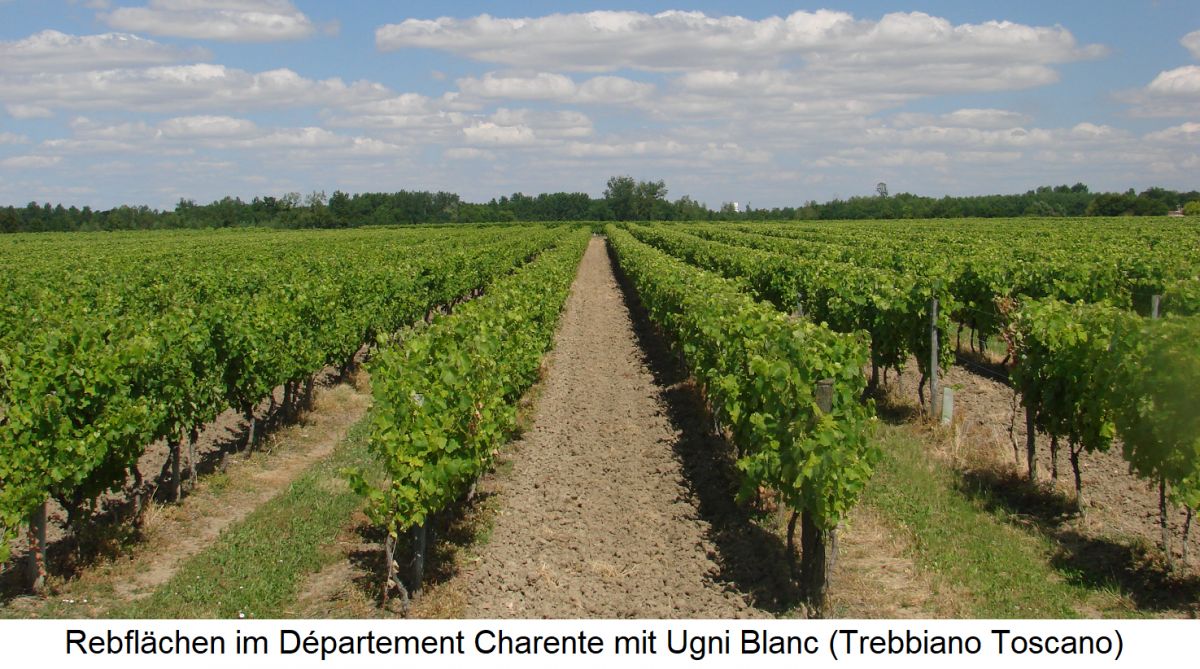Abbreviation for "Very Special Old" or also "Very Superior Old" (very excellent, old) as an indication of the maturing time or quality for a brandy; see under Cognac.
Cognac
Probably the most famous brandy in the world is named after the town of the same name in the Charente department just north of Bordeaux in south-west France near the Atlantic coast. When the Roman general Julius Caesar (100-44 BC) conquered Gaul, his legionnaires allegedly brought the Trebbiano grape from their homeland, which later became the main grape variety for Cognac. According to legend, the name of the Cognac region goes back to the Roman general Comnus. In the 12th century, spriting, the process of preserving wine by adding ethyl alcohol, was introduced. It also emerged that wine from the Cognac region was particularly suitable for distilling.

Around 1530, the Dutch introduced the art of distillation to this region, calling the wine distillates "Brandewijn", from which the English term brandy was later derived. At that time, it was common practice to produce distillates by distilling them once, as is still the case today with French Armagnac.
Invention of cognac
According to legend, the invention of cognac through a double distillation, which was unknown at the time, is attributed to the Chevalier de la Croix Maron, Seigneur de Segonzac (ancestor of the Castelbajac family of cognac producers) at the end of the 16th century. The deeply religious knight is said to have dreamt that the devil wanted to steal his soul by burning it out in a cauldron. However, thanks to his unshakeable faith, he survived the ordeal unscathed. A second attempt by the devil to distil the spirit was also unsuccessful, so the knight had the idea of extracting the spirit's soul with a second distillation.
The new drink quickly caught on due to its better flavour, and the Dutchman Augustin Godet was the first to receive state permission to export cognac. In 1634, the first cognac trading house "Maison Augier", which still exists today, was founded. A certain Jean Martell settled in Cognac in 1715 and produced cognac, followed by Richard Hennessy and others, who are still among the most renowned brands today.
Champagne Treaty
Articles 274 and 275 of the 1919 Treaty of Versailles were known as the "Champagne Treaty". These prohibited German products from bearing foreign designations of origin, which had been customary until then. This particularly affected champagne and cognac from German production, which from a French perspective were misleadingly named after French regions. Since then, these products have been labelled as sparkling wine and brandy.
Region of origin and grape varieties
Phylloxera arrived in this region around 1870 and destroyed many vineyards in the Charente. The current vineyard area of around 75,000 hectares is only a third of what it was back then. The basis for 90% of Cognac production is...
Voices of our members

As honorary chairman of the Domäne Wachau, it is the easiest and quickest way for me to access the wein.plus encyclopaedia when I have questions. The certainty of receiving well-founded and up-to-date information here makes it an indispensable guide.
Hans-Georg Schwarz
Ehrenobmann der Domäne Wachau (Wachau)